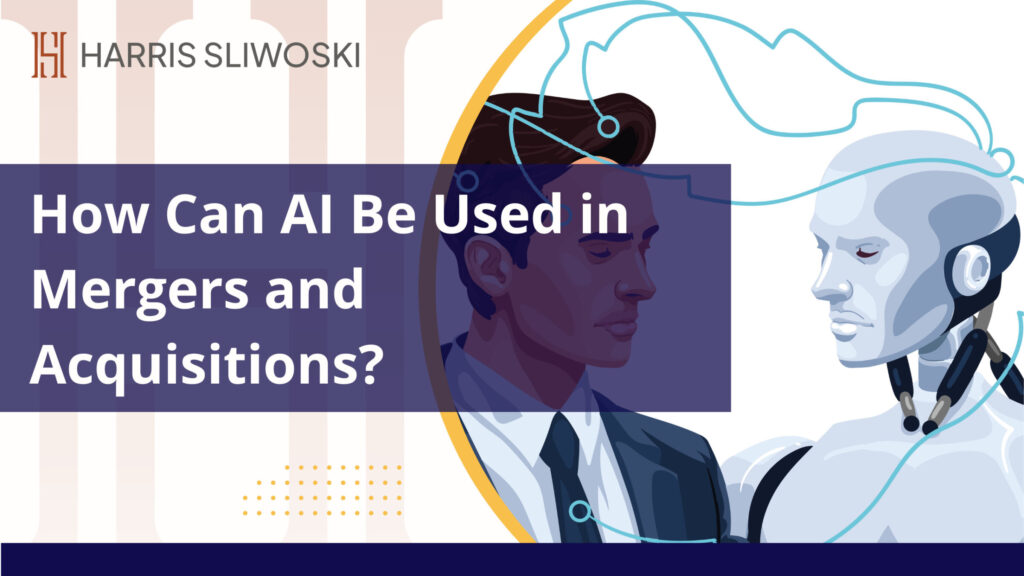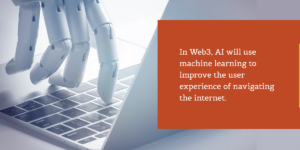Register Here for our January 31st webinar.
In the span of approximately 12 months, artificial intelligence (AI) has quickly become one of the most consequential technologies in this generation, with ChatGPT leading the way. Join me for an insightful webinar on January 31st, where I will further explore this fascinating topic with IP and data privacy attorney Griffen Thorne. As an adjunct to our webinar, this post focuses on how AI can be utilized in mergers and acquisitions from a transactional lawyer’s point of view.
Using AI in Due Diligence
Due diligence is the process by which a company evaluates a potential business partner. In an M&A transaction between equals, this means that both sides will get the opportunity to look at the other side’s records of all types, typically with very little held back. These due diligence requests typically result in large data rooms with hundreds or thousands of documents. A significant portion of transactional legal fees is allocated to due diligence.
AI can analyze these large data rooms to conduct due diligence faster and more thoroughly than people can. This expertise includes scanning financial documents, contracts, employee records, and cybersecurity risks. AI can also help identify business risks and value drivers.
It is very helpful to ask the AI bot both general and specific questions. For general questions, ask what significant trends it sees and what types of questions you should be asking about the data. For specific questions, ask whether there are any missing contracts, upcoming deadlines, or any risks surrounding the treatment of employees.
Using AI in Valuation Modeling
AI algorithms can review data from past deals and company financials to build models that predict valuation ranges and premiums for potential acquisition targets. This provides a benchmark for setting bid prices. This can be tuned to general market conditions or specific industries.
AI can also be tuned to company-specific metrics and analyzed by project type or project group. It can also help identify which prior acquisitions were overbid or underbid. All of this data can be compared to your deal lawyer’s past and recent projects to predict future market changes.
Using AI to Locate Company Synergies
By studying data and processes of the target and acquirer, AI can spot integration challenges early while also identifying cost and revenue synergies between the companies. These types of insight inform integration planning. Then your transaction team can start planning ahead of time what types of changes will need to be implemented.
These preferences can then be written into the purchase agreement and ancillary documents, including future compensation packages for management who will be continuing post-acquisition. This is a seemingly soft part of the M&A process, but we have seen many deals fall apart because of a lack of vision between the acquiror and the target’s management teams.
Using AI to Gauge Internal and External Sentiment
AI can evaluate corporate culture alignment and track stakeholder sentiment through various channels such as early transaction discussions, due diligence calls, earnings reports, press releases, employee surveys, and internal communication platforms like emails, Slack, or Teams
Not all of these information sources will be accessible to the acquiror, but it is often important for the acquiror and the target to gauge internal sentiment. This is especially important for the acquiror, which will be seeking to integrate teams from both companies and manage external expectations. Because goodwill is often a significant component of any ongoing company’s value, these indicators can help estimate goodwill risk.
Using AI in Contract Analysis
AI can speed up the lengthy process of contract review by scanning documents and highlighting important terms, rights, and obligations. It will help narrow an attorney’s focus to key terms in identical documents.
AI can also help identify contract anomalies, such as when a particular template NDA or NNN agreement started or stopped being used. It can be especially helpful in understanding which contracts are using standard market terms and where those terms deviate from market terms. And it can quickly identify which seemingly identical contracts are different and why those differences might be material to the transaction at hand.
Using AI to Stay on Schedule
AI can track communication activity levels, response times on both sides of the deal, meeting coordination, and information request responsiveness. These potential bottlenecks can be identified among the deal teams early in the transaction process so that both sides understand who and what items are behind schedule.
AI can also create closing agenda from the primary transaction agreement. We ran an anonymized 30-page agreement through Claude.ai, and after several iterations (and only a few minutes) it provided a decent agenda, as well as additional suggestions to improve the agenda. AI when integrated with your email server can also update the closing agenda based on the typical flurry of email exchanges with the other side in the transaction.
Conclusion – Using AI as an M&A Accelerator
The end result is that AI can help M&A teams work faster, reduce costs, more accurately value deals, and make better decisions. This is all crucial, especially at the end of the transaction year when deals need to get completed within extremely tight transaction time frames.
The benefits of AI cannot be understated or ignored. But full AI implementation in the M&A context requires many elements: quality data inputs, oversight of AI models, and understanding AI’s limitations. This requires a seasoned transaction legal team to know what may be missing from the deal structure and documents.
January 31st Jonathan Bench and Griffen Thorne will be presenting a free webinar,
Generating Value with Generative AI: Growing Business Value with AI Without Sacrificing Proprietary Content
























